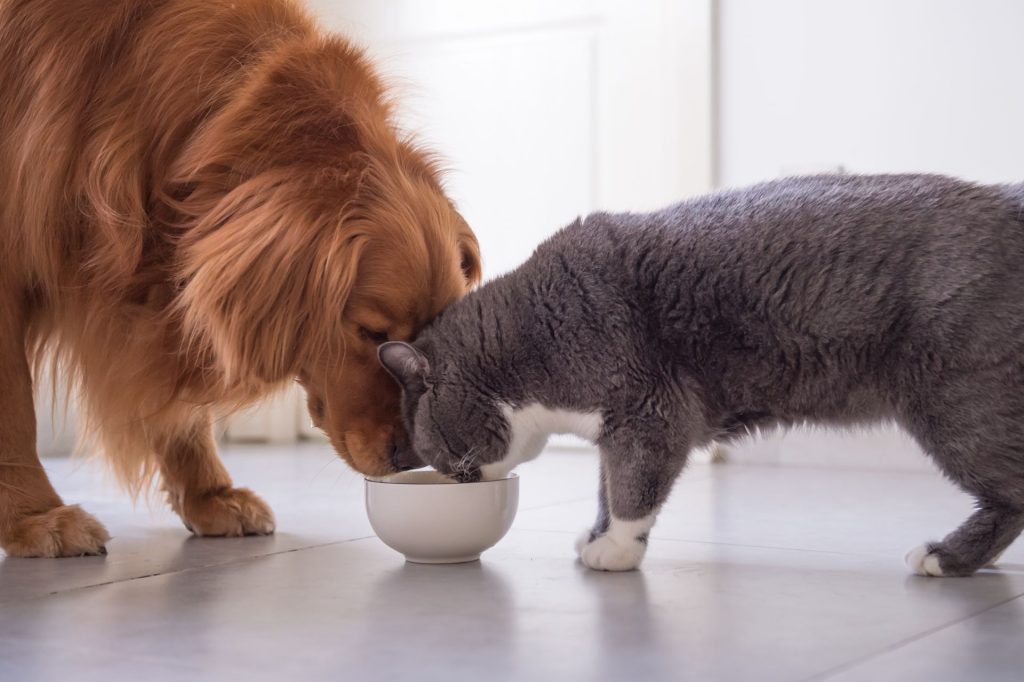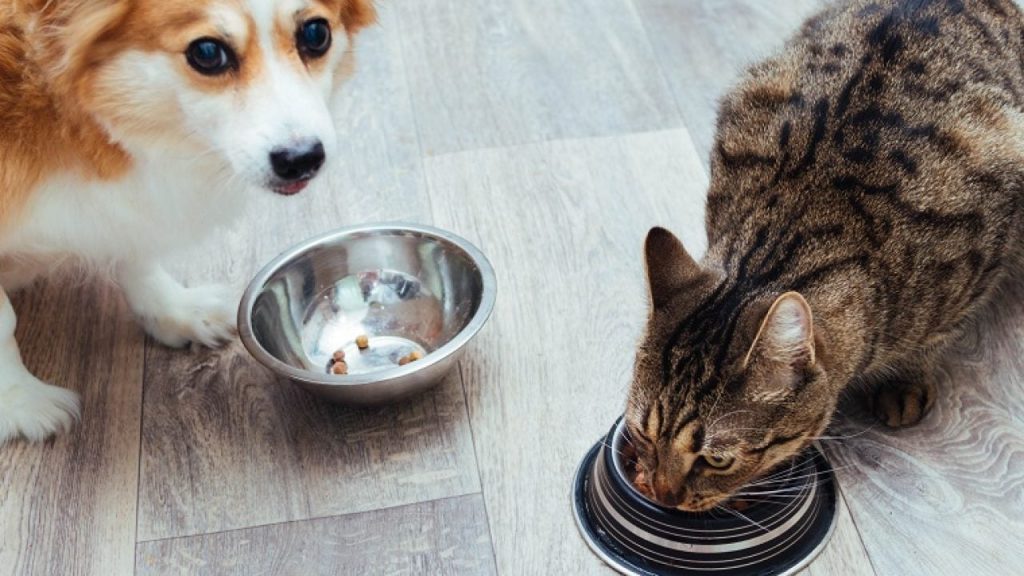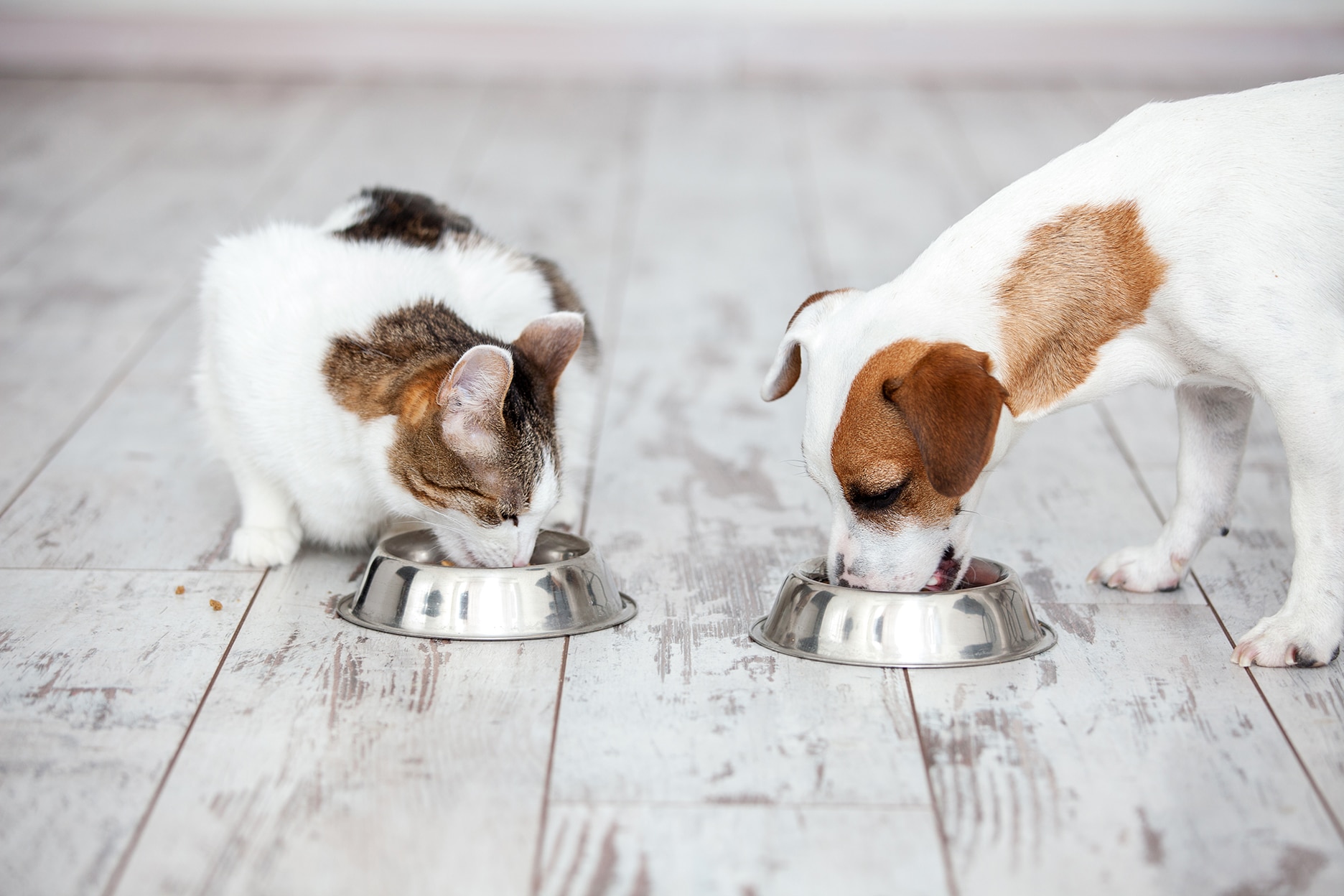It’s easy to identify the physical and behavioral differences between cats and dogs, but many pet parents are not aware of the varying nutritional needs between species. While felines and canines have similarly been domesticated from wild ancestors to become the companions to us they are today, each require very specific diets based on their unique metabolic systems. If you’ve ever wondered about the distinction between cat and dog food, this article discusses why diets between both carnivores are not the same, and how specific nutrient profiles contribute to your animal’s health and well-being.
Carnivores, herbivores, omnivores and the in-between
Humans are omnivores, which means we have the physiological ability to eat, obtain energy from and survive on both plant and animal food sources. Herbivores are animals that subsist on plants, such as horses and some small pets like rabbits and guinea pigs.
Cats (both wild and domestic) are classified as obligate carnivores. They must eat meat in order to thrive. While they can ingest other foods such as fruits or grains, their diet requires meat. True carnivores are unable to efficiently digest vegetative matter.
When it comes to dogs, there has long been a debate as to whether they are carnivores or omnivores. Most veterinarians agree that dogs are carnivores, however, the U.S. National Research Council, which studies and examines matters related to health care, considers dogs to be omnivores. Unlike cats, dogs are scavengers. They will sort through garbage, discarded material and eat dead carcasses. While they prefer meat, they can survive on plants if necessary. Because of this, they are believed to be scavenging carnivores – a happy medium between carnivores and omnivores. It’s important to note that while dogs can survive on a meatless diet, they do not thrive at their optimal health.
The reason dog food differs from cat food is that cats have special dietary needs that scavenging carnivores and omnivores do not.

Unique nutritional needs of cats
As obligate carnivores, cats require animal-based nutrients such as muscles and organ meat to survive. Plant-based proteins such as grains and vegetables are not good substitutes. As they evolved and consumed prey that had already digested plant-based nutrients, cats’ metabolisms lacked the enzymes necessary to convert those nutrients as efficiently as animal proteins. Moreover, the proteins derived from animal tissue contain a different amino acid profile than plant-based proteins, which do not contain all the essentials for the health of an obligate carnivore.
In addition to their higher requirement for protein, cats also need increased amounts of certain amino acids found naturally in animal tissue. One of the amino acids missing in plants is taurine, which is found in animal muscle meat, in particular the heart and liver. A taurine deficiency can cause serious health concerns in cats, including cardiovascular disease and blindness. Dogs’ bodies produce their own taurine.
Cats also have other unique needs for certain vitamins:
Vitamin A – Cats have a special requirement for vitamin A, which is available naturally only in animal tissue. They lack the intestinal enzymes necessary to convert B-carotene in plants to the active form of vitamin A. Vitamin A is essential for the maintenance of vision, growth of bone and muscle, reproduction, and skin health.
Vitamin B – Cats also require 5 times more dietary thiamine (vitamin B1) than dogs do. A thiamine deficiency can result in a poor-quality coat, loss of appetite, hunched posture and neurological problems including seizures that may lead to death.
Vitamin D – Cats and dogs must consume vitamin D in their diet. The liver and fatty tissue of prey animals are rich in vitamin D.
Arachidonic acid – This omega-6 fatty acid dogs can make themselves, but cats must obtain it through their diet.

Another distinctive feature of cats is their need for a moisture-dense diet, as they are not as responsive as dogs and other mammals to the instinct to feel thirst or dehydration. While dogs frequently drink water, cats are not instinctually driven to seek out water sources aside from food. This is why it’s important to incorporate wet food into your cat’s balanced meals every day, and not solely rely on dry kibble. When cats do not get enough water, they can develop urinary and kidney conditions.
Feeding species-specific diets
Food designed for cats is significantly higher in calories, protein and fat than dogs require. For pet parents who share their home with both cats and dogs, it’s quite normal to observe both types of animals eat the other’s food from time to time. While this is not life-threatening it is of course always best to feed responsibility.
A balanced and appropriate diet from EcoPet, along with routine veterinary care and exercise will allow your furry friend to live and long and healthy life.
